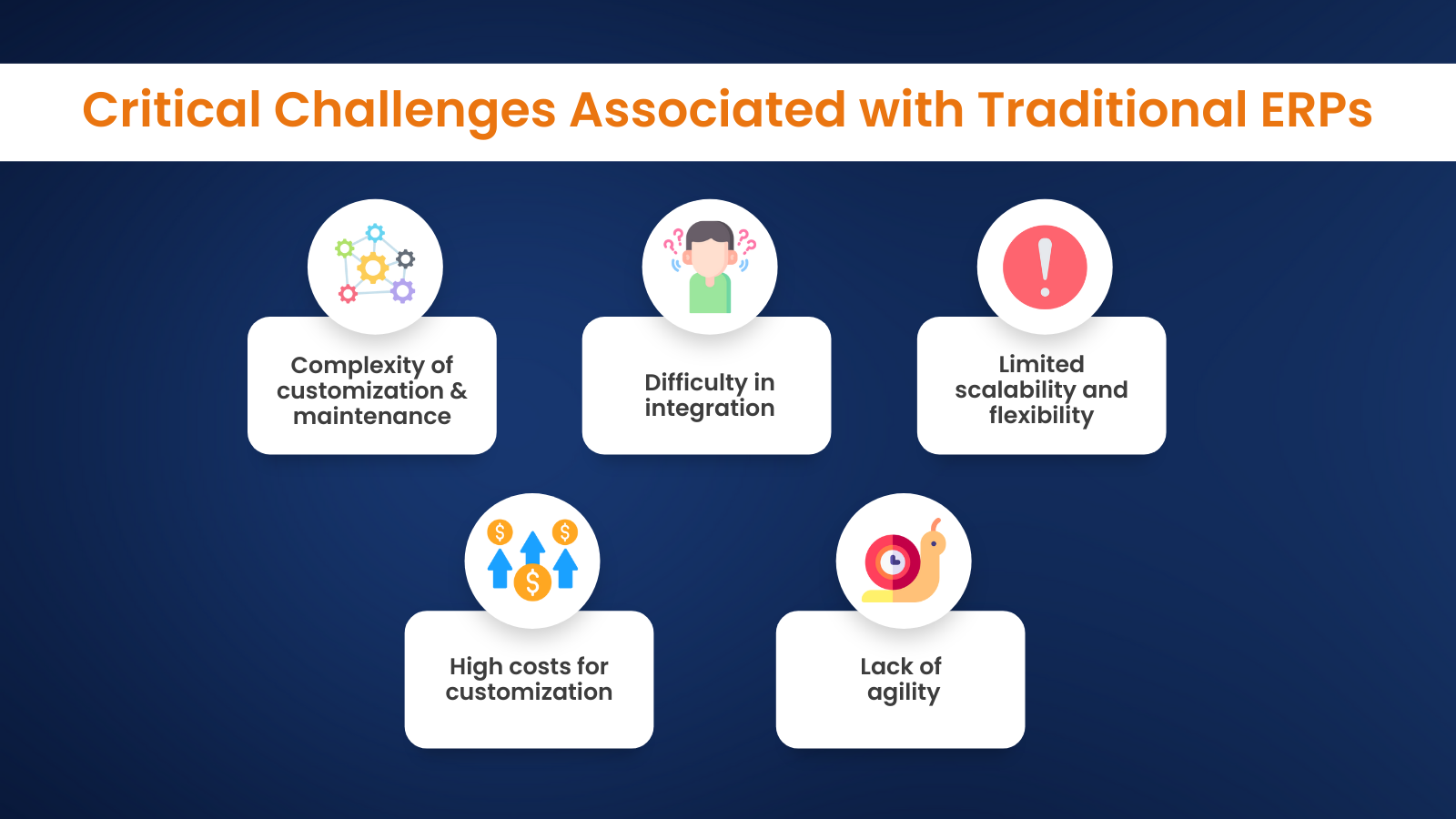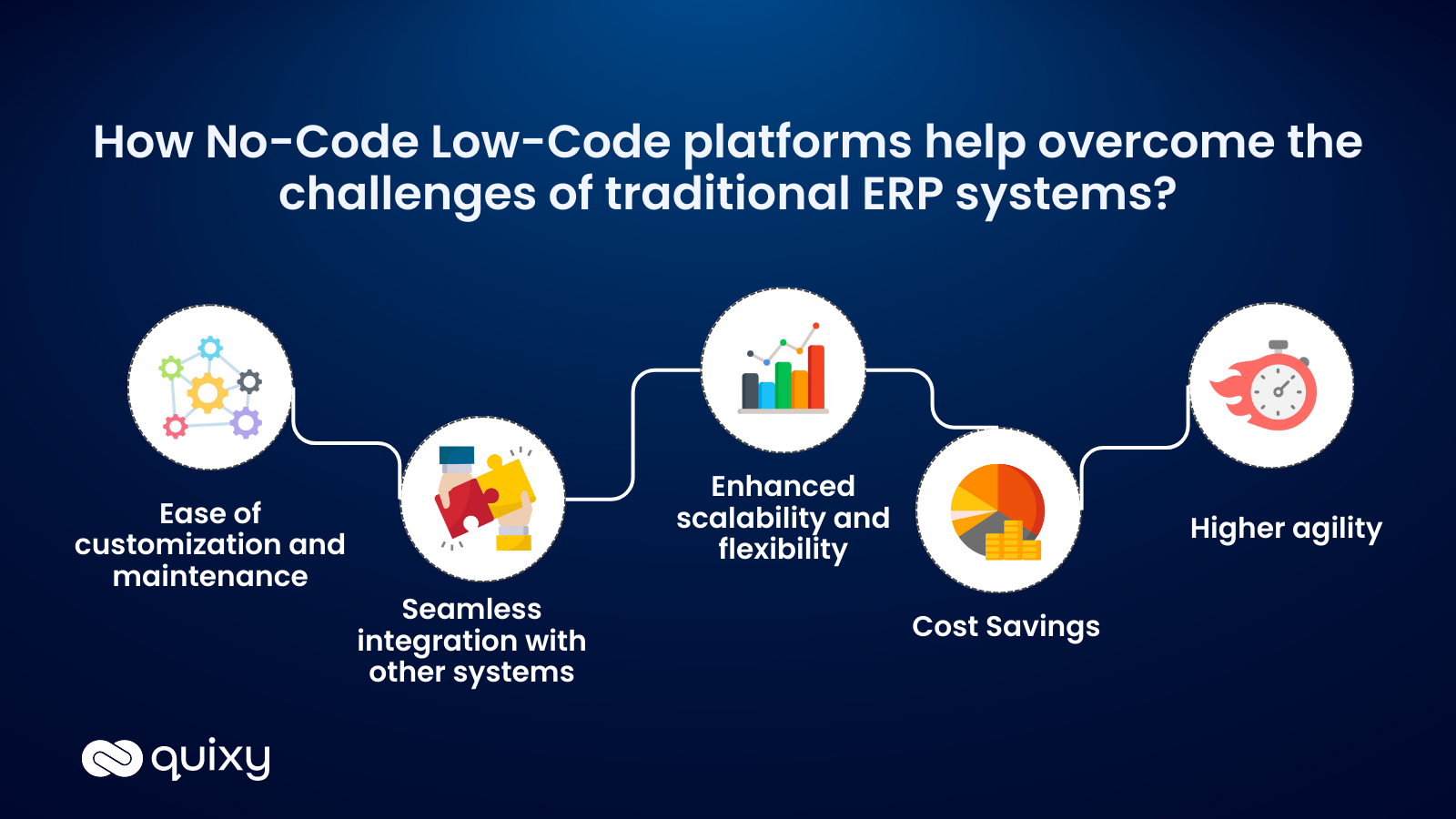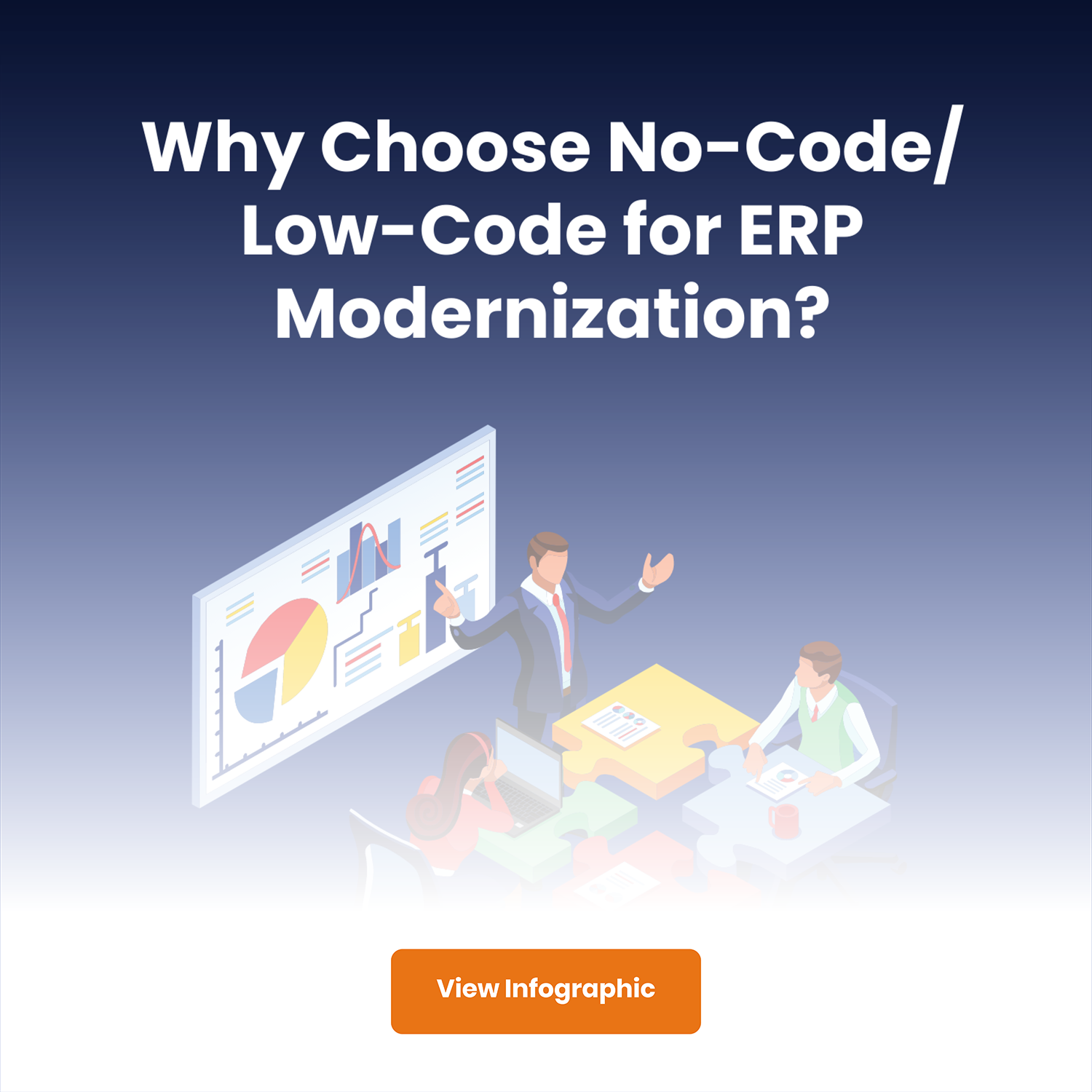
Bill Gates once said, “How you gather, manage, and use information will determine whether you win or lose.” While this holds true for a lot of contexts, we can’t help but notice how aptly it fits enterprise resource planning (ERP) systems. They have become a critical tool for modern businesses across a range of industries. In fact, 53% of businesses believe ERP is one of the priority sectors for investments.
At their core, ERPs provide a centralized platform for managing a company’s core business processes, including everything from accounts to customer relationship management. This unified system offers a wealth of benefits, including increased efficiency, improved accuracy and productivity, enhanced visibility into business operations, and better decision-making capabilities. Without an ERP, businesses are forced to rely on disparate systems and manual processes, which can result in errors, delays, and inefficiencies that can ultimately impact the bottom line.
However, not all ERP systems are built the same. Not all of them can be trusted to give you the right results and to build a foundation for your business to succeed. So, what is it that can make or break the effectiveness of your ERP system? How can you ensure that you are set up for success by ERP modernization? How ERP with no-code low-code can help your business to eliminate all the roadblocks that come with traditional ERP? We’ll try to answer that and more in this article. Let’s dive in!
Traditional ERP Systems: An Overview
Traditional and legacy ERP systems have been the backbone of organizational processes for several decades now. These systems are typically installed on-premises and offer a range of functions, such as financial management, HR management, supply chain management, inventory control, and more.
According to a report by Panorama Consulting, on-premise ERP systems still hold 46.9% of the market. This highlights the continued reliance on traditional ERP systems, despite the increasing popularity of cloud-based solutions. So why is it that organizations are not fully embracing ERP modernization? A few common reasons are listed below:
- Legacy ERP systems: Many organizations have been using ERP systems for several years, and they have become a critical part of their business operations. These systems are often tightly integrated with other software and hardware, making it difficult to replace them without significant disruption to business operations.
- High costs: ERP modernization can be expensive, especially for larger organizations with complex systems. The cost of implementing a new ERP system can be substantial, and many organizations may not have the budget to justify the expense.
- Risk: Any major system upgrade or replacement carries inherent risks, such as data loss or system downtime. This risk can be especially significant for organizations with high levels of transactional volume or those that rely heavily on their ERP systems for day-to-day operations.
- Resistance to change: Employees and management may resist change, especially if they have used a particular ERP system for a long time. This resistance may stem from a fear of the unknown, a lack of understanding about the benefits of a new system, or simply a preference for the existing system.
- Lack of expertise: ERP modernization requires specialized skills and expertise, which may not be readily available within an organization. This can make finding the right resources to manage the project challenging, leading to delays or even project failure.
However, none of these reasons can come close to justifying what businesses risk losing if they do not modernize their ERP systems. In today’s cutthroat environment, an obsolete ERP system can set your business far behind what you realize. Don’t take our word for it; let’s look at some ways in which your attachment to legacy ERP systems can be harming your business more than you think.
Also Read: 6 Signs that your Legacy System is an obstacle for your business’s Digital Transformation!
Critical Challenges Associated with Traditional ERPs

Traditional ERP systems have been around for many years and were once considered cutting-edge technology. However, as technology continues to evolve, these systems are becoming increasingly outdated, and they can actually harm businesses in several ways:
1. Complexity of customization and maintenance
One major challenge with legacy ERP systems is the complexity of customization and maintenance. These systems were designed to be highly customized to meet the unique needs of each business. However, this level of customization can be incredibly time-consuming and costly, making it difficult for businesses to keep up with changing business needs.
2. Difficulty in integrating with other systems
Another challenge is the difficulty in integrating with other systems. Traditional ERP systems are often siloed, meaning that data is stored in separate systems, making it difficult to get a complete picture of business operations. This can make integrating with other systems and technologies challenging, limiting the organization’s ability to innovate and stay competitive.
3. Limited scalability and flexibility
Traditional ERP systems were not designed with scalability and flexibility in mind. As businesses grow and change, these systems can become outdated and unable to meet evolving business needs. This can lead to a lack of agility and an inability to respond to changing market conditions.
4. High costs associated with customization and maintenance
Customizing and maintaining traditional ERP systems can be expensive, making it difficult for businesses to justify the investment. These systems can also be time-consuming to maintain, which can limit the resources available for other critical business activities.
5. Lack of agility in adapting to changing business needs
Finally, traditional ERP systems are often inflexible and can’t adapt quickly to changing business needs. This lack of agility can limit the organization’s ability to respond to market conditions, making it difficult to stay competitive.
As you can see, traditional ERP systems risk making you rigid and obsolete, but they can also take a hit on your budget and drastically reduce your ROI.
We hope that we have convinced you to upgrade and modernize your legacy ERP system. However, what is the right and the most effective way to go about it? What should be your plan of action? Worry not, because we have the perfect answer for you!
No-code low-code technology.
How? Let us explain everything.
All About No-Code Low-Code Platforms
Before we get into how no-code low-code platforms can modernize your ERP, let’s first take a step back to understand and appreciate them.
No-code low-code platforms are software development tools that allow users to create applications without the need for extensive coding knowledge or experience. These platforms use visual interfaces and drag-and-drop functionality to simplify the application development process, allowing users to create applications quickly and easily.
No-code platforms provide a completely visual approach to creating applications, meaning that users do not need coding knowledge to use them. Instead, users can drag and drop pre-built elements into their application, such as buttons, forms, and workflows. The platform then automatically generates the underlying code to create a fully functional application.
On the other hand, low-code platforms require some coding knowledge but are still designed to simplify the application development process. These platforms provide pre-built templates and libraries of reusable code, allowing users to build applications faster than they would be able to from scratch.
Both no-code and low-code platforms are designed to make application development more accessible to non-technical users, allowing businesses to build custom applications that meet their specific needs without the need for extensive IT resources or expertise. These platforms can also help to reduce development costs and improve time-to-market, making them a popular choice for businesses looking to innovate and stay ahead of the competition.
How Do No-Code Low-Code Platforms Overcome Challenges with Traditional ERP?

No-code low-code platforms can help overcome the challenges of traditional ERP systems by providing businesses with a more agile, flexible, and cost-effective approach to application development. No-code low-code ERP modernization can help your business greatly. Here are a few ways that no-code low-code platforms can help overcome the challenges of traditional ERP systems:
1. Ease of customization and maintenance
No-code low-code for ERP simplify the application development process by using visual interfaces and pre-built templates. This makes it easier to customize applications to meet specific business needs without the need for extensive coding knowledge or experience. This can help reduce the complexity of customization and maintenance, making it easier and more cost-effective to update and maintain applications.
2. Seamless integration with other systems
No-code low-code platforms can help overcome the difficulty in integrating with other systems by providing pre-built connectors and APIs that allow businesses to easily integrate with other systems and technologies. This can help businesses to create a more connected and streamlined IT infrastructure that improves efficiency and reduces costs.
3. Enhanced scalability and flexibility
Many no-code low-code platforms are designed to be more flexible and scalable than traditional ERP systems. They allow businesses to quickly and easily add new features and functionalities to their applications, making it easier to adapt to changing business needs and scale as the business grows.

4. Cost Savings
No-code low-code for ERP can help reduce the costs associated with customization and maintenance by providing pre-built templates and workflows that can be easily customized to meet specific business needs. This can help reduce the need for extensive coding and development work, which can be expensive and time-consuming.
5. High agility in adapting to changing business needs
No-code low-code platforms are designed to be more agile and responsive to changing business needs than traditional ERP systems. They allow businesses to quickly and easily create new applications or modify existing ones, making it easier to respond to changing market conditions and stay ahead of the competition.
Also Read: Unleashing the potential of your existing IT systems
Use Cases for No-Code Low-Code Platforms in Conjunction with ERPs
Now, we are not saying that you need to completely do away with your existing ERP systems and start from scratch. You can have the best of both worlds, where you can combine no-code low-code with the ERP you currently have. You can use the arsenal of features provided by these platforms for upgradation and ERP modernization. Let’s explore how:
1. Automating workflows and processes
Manual workflows and processes can be tedious, time-consuming, and error-prone. By integrating no-code low-code platforms with ERPs, businesses can automate their workflows and processes, making them faster, more accurate, and more efficient. ERP modernization here can help reduce costs, improve productivity, and ensure consistency in output.
For example, a company could use a no-code low-code platform to automate its purchase order approval process. When a purchase order is generated in the ERP, it can trigger a no-code low-code platform workflow, which routes the order to the appropriate approver based on predefined rules. The approver can then review and approve the order within the platform, which can automatically update the ERP system.
2. Developing custom dashboards and reports
Dashboards and reports are essential tools for business intelligence and decision-making. No-code low-code for ERP can help businesses develop custom dashboards and reports tailored to their specific needs without extensive coding knowledge or expertise.
For example, a company could use a no-code low-code platform to create a custom dashboard that displays real-time data on its inventory levels, sales figures, and customer orders. The platform could integrate with the ERP to automatically pull the relevant data, and the dashboard could be updated in real-time.

3. Integrating with third-party applications and systems
Most businesses rely on a variety of third-party applications and systems to support their operations. Integrating these systems with the ERP can be a complex and time-consuming process. However, no-code low-code platforms can simplify this process by providing pre-built integrations and APIs that enable businesses to connect their systems and applications quickly.
For example, a company could use a no-code low-code platform to integrate its ERP with its customer relationship management (CRM) system. The platform could provide pre-built connectors that enable the two systems to communicate seamlessly, allowing sales reps to access customer data from within the ERP.
Also Explore: Infographic Problems with Legacy Software you should know
4. Building mobile applications and chatbots
With the rise of mobile devices and messaging apps, businesses need to be able to connect with their customers on the platforms they use most. No-code low-code platforms can help businesses build mobile applications and chatbots that enable them to engage with customers in real-time.
For example, a company could use a no-code low-code platform to build a chatbot that enables customers to check the status of their orders, request support, and receive notifications about special offers. The platform could integrate with the ERP to provide real-time updates on order status and inventory levels.
5. Enhancing user experience and productivity
One of the biggest challenges of ERP systems is user adoption. Complex interfaces and processes can be intimidating and time-consuming, leading to low adoption rates and reduced productivity. No-code low-code platforms can help address this challenge by providing user-friendly interfaces and streamlined workflows.
For example, a company could use a no-code low-code platform to create a custom user interface for its ERP system that simplifies the process of creating and approving purchase orders. The platform could provide a drag-and-drop interface that enables users to quickly create orders and submit them for approval, with automated workflows that route the orders to the appropriate approvers. This can help increase user adoption and productivity and reduce the risk of errors and delays.
The ease of use and flexibility of no-code low-code platforms makes them a powerful tool for businesses of all sizes and industries. With the right platform, businesses can leverage the power of their existing systems while ensuring ERP modernization to meet future demands.
Also Read: Don’t let Legacy Enterprise Systems burn a hole through your pocket
Case Studies of No-Code Low-Code Platforms in Conjunction with ERPs
Many businesses across industries have used no-code low-code platforms for ERP modernization.
For example, a large logistics company relied on multiple technologies such as web-based tracking, electronic invoice system, CRM system, etc. Soon, it became difficult to integrate so many technologies with their legacy ERP system. This led to poor customer experience and made work hard for employees who had to log in to multiple systems to serve customers.
The company turned to a no-code low-code platform to ensure digital transformation and continuous agility. Using this technology, a web and mobile-friendly application was developed that allowed customers and employees to schedule pickups, track shipments, and access other information. The application was created in just about 11 weeks and eliminated all the integration hassles. The system was also such that it could be rapidly updated as per requirements.
Another large IT distributor was stuck in a rut. They had to deal with several laborious manual processes because changes to their standard ERP software would take too long. Using no-code low-code for ERP allowed them to integrate their system with SAP and drive unmatched agility and effectiveness, leading to impressive results.
Explore Infographic: ERP Modernization with No-Code Low-Code
Best Practices for Using No-Code Low-Code for ERP
While combining no-code low-code with your existing ERP system might seem tricky at first, we have a few tips and tricks to make your journey easy. Here are some of the best practices for using no-code low-code platforms with ERPs:
1. Conducting a thorough assessment of business requirements
Before implementing a no-code low-code platform, conducting a thorough assessment of business requirements is important. This includes identifying pain points, determining the scope of the project, and defining key objectives. This assessment can help ensure that the chosen platform meets the business’s specific needs and that the project stays on track.
2. Choosing the right no-code low-code platform
Not all no-code low-code platforms are created equal. Businesses need to choose a platform that meets their specific needs, taking into account factors such as ease of use, scalability, and integrations with existing systems. It is also important to consider the platform’s reputation, support options, and pricing model. This can prove to be quite integral in the success of using no-code low-code for ERP.
3. Integrating no-code low-code solutions with existing IT infrastructure
To ensure successful integration with ERPs, no-code low-code solutions need to be integrated with existing IT infrastructure. This includes identifying any existing integrations or customizations and ensuring that the new solution will not disrupt these integrations. It is also important to involve the IT department in the planning and implementation process to ensure that all security and compliance requirements are met.
4. Ensuring security and compliance
No-code low-code for ERP can create potential security and compliance risks. Businesses need to ensure that the chosen platform meets all relevant security and compliance standards. This includes conducting a thorough risk assessment, implementing appropriate access controls, and ensuring that all data is stored securely. It is also important to regularly review and update security and compliance policies as needed.
5. Providing adequate training and support
No-code low-code platforms can be easy to use, but they still require some level of training and support. It is important to provide adequate training to users and have a support system in place to address any issues. This can help ensure that users are comfortable with the platform and that the project stays on track.
By following these best practices, businesses can successfully modernize their ERP systems and stay competitive in today’s rapidly evolving marketplace.
The Takeaway: Why You Need to Use ERP with No-Code Low-Code
In conclusion, traditional ERP systems can harm businesses’ growth in several ways, including complexity of customization and maintenance, difficulty in integrating with other systems, limited scalability and flexibility, high costs associated with customization and maintenance, and a lack of agility in adapting to changing business needs. To remain competitive, businesses must consider modernizing their ERP systems to keep up with the ever-changing technological landscape. No-code low-code platforms like Quixy provide a perfect solution for the same.
No-code low-code platforms can help overcome the challenges of traditional ERP systems by providing businesses with a more agile, flexible, and cost-effective approach to application development. By simplifying the development process, improving integration with other systems, and providing greater scalability and flexibility, no-code low-code platforms can help businesses stay ahead of the curve.
If you are a CIO, you should seriously consider using no-code low-code platforms in conjunction with their legacy ERP systems for ERP modernization. It can help you achieve your digital transformation goals faster and more efficiently. These platforms can help bridge the gap between business users and IT, enabling business users to develop and customize applications to meet their specific needs without relying on IT resources. This can reduce the burden on IT departments, improve productivity, and drive innovation. By combining the power and functionality of traditional ERP systems with the agility and flexibility of no-code low-code platforms, CIOs can create a more agile, connected, and innovative IT infrastructure that can help their organization stay ahead of the competition.
Frequently Asked Questions (FAQs)
What is ERP Modernization?
ERP modernization is the process of upgrading or replacing your current enterprise resource planning (ERP) system with a modern and flexible solution. It’s important because it can help improve your business operations, increase productivity, and keep your organization competitive.
How can I tell if a company needs to modernize its ERP system?
Some common signs that your company needs to modernize your ERP system include slow or inefficient processes, difficulty integrating with other systems, outdated technology, lack of real-time data visibility, and poor user adoption.
What are some tips for ensuring a successful ERP modernization initiative?
To ensure a successful ERP modernization initiative, it’s important to start by understanding your business requirements and objectives. You should involve all stakeholders in the process, select the right ERP solution, ensure data accuracy and integrity, provide adequate training and support to employees, and keep monitoring and adjusting the initiative as needed.
What are some benefits of ERP modernization for an organization and its employees?
ERP modernization can bring several benefits, such as improved business agility, increased productivity, enhanced data accuracy and visibility, better decision-making capabilities, and reduced costs through process automation and optimization. It can also provide a more seamless and integrated experience for employees and customers, making their jobs easier and more fulfilling.
Subscribe
Login
Please login to comment
0 Comments
Oldest















